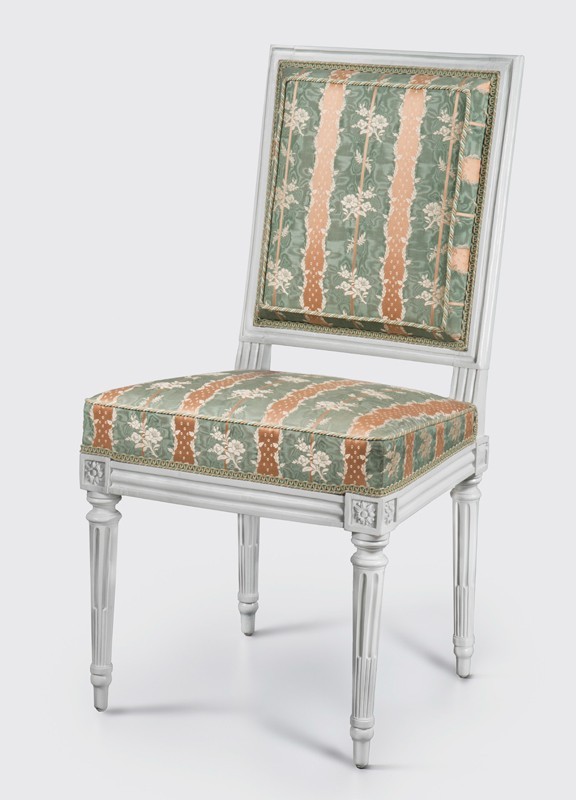
Jean-Baptist Lelarge III, side chair, Paris, ca. 1780. Beech; paint. H. 35 3/8", W. 18 1/8", D. 16 1/2". (Courtesy, Mount Vernon Ladies’ Association; photo, Gavin Ashworth.)
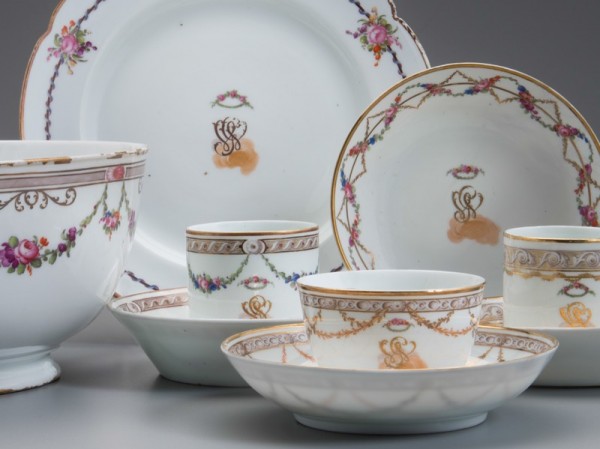
Dessert service, Niderviller, France, ca. 1782. Porcelain (hard-paste). (Courtesy, Mount Vernon Ladies’ Association; photo, Gavin Ashworth.)
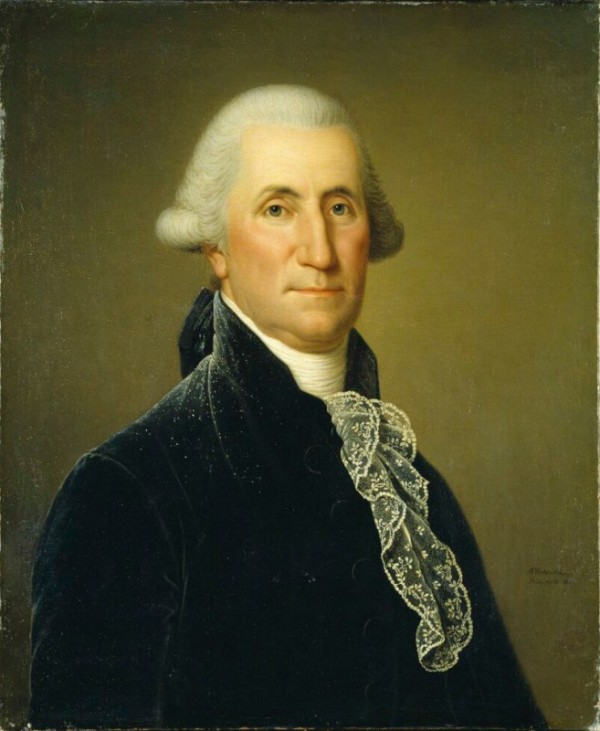
Adolf Ullrik Wertmüller (1751–1811), George Washington, United States, 1795. Oil on canvas. 25 1/2" x 20 13/16". (Courtesy, Nationalmuseum, Stockholm, Sweden; photo, Nationalmuseum, CC BY-SA.)
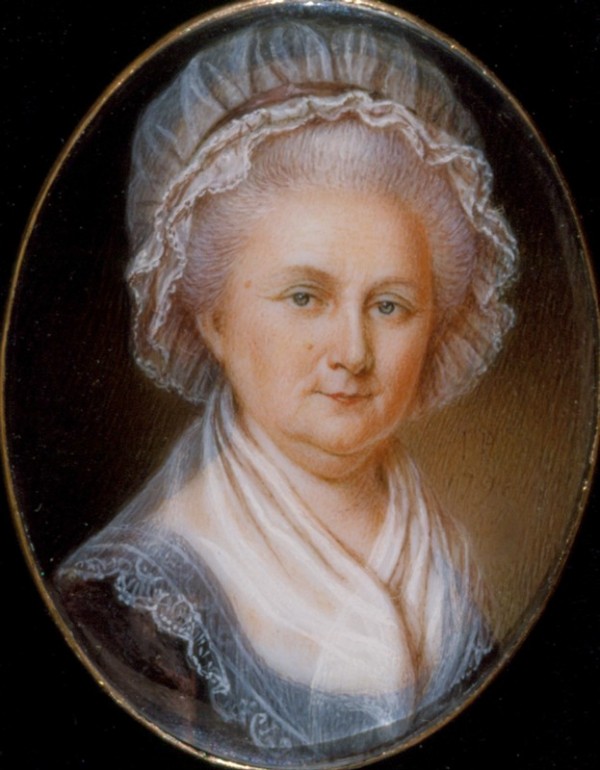
James Peale (1749–1831), portrait miniature of Martha Washington, United States, 1796. Watercolor on ivory. H. 1 5/8", W. 1 1/4". (Courtesy, Mount Vernon Ladies’ Association; photo, Paul Kennedy.)
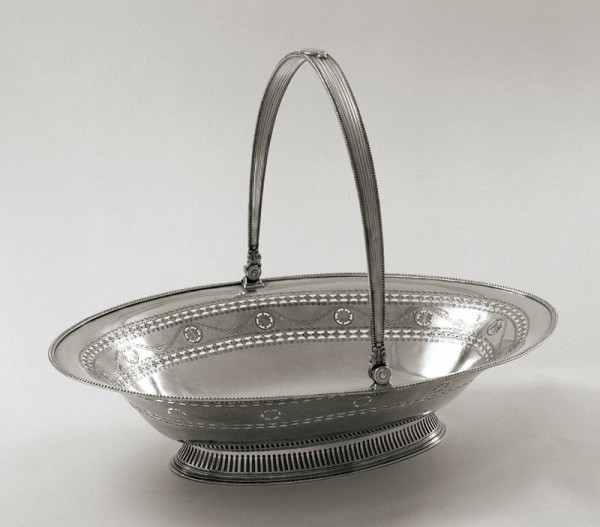
Bread basket, England or France, ca. 1783–1784. Sliver-plated copper. H. 11 1/2", W. 14 5/8". (Courtesy, Mount Vernon Ladies’ Association; photo, Gavin Ashworth.)
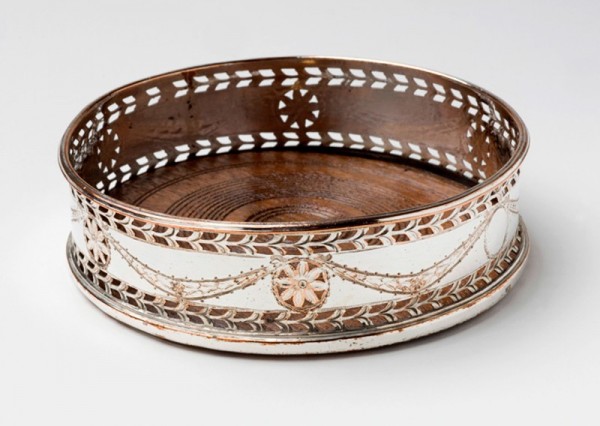
Wine coaster, England or France, ca. 1783–1784. Silver-plated copper, wood, ivory. H. 1 3/8", Diam. 5". (Courtesy, Mount Vernon Ladies’ Association; photo, Mark Finkenstaedt.)
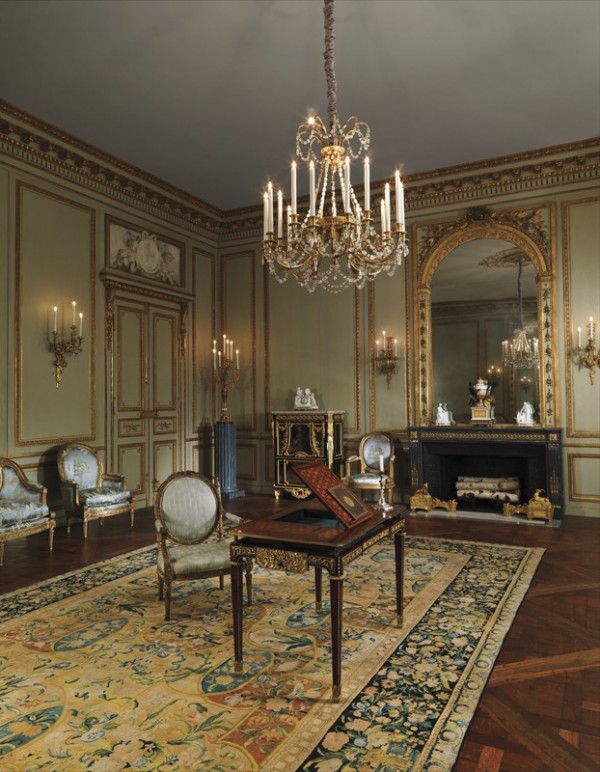
Grand Salon from the Hôtel de Tessé, by Nicolas Huyot; carved by Pierre Fixon and (or) his son Louis-Pierre Fixon, Paris, ca. 1768–1772. (Courtesy, Metropolitan Museum of Art, gift of Mrs. Herbert N. Straus, 1942, acc.42.203.1.)
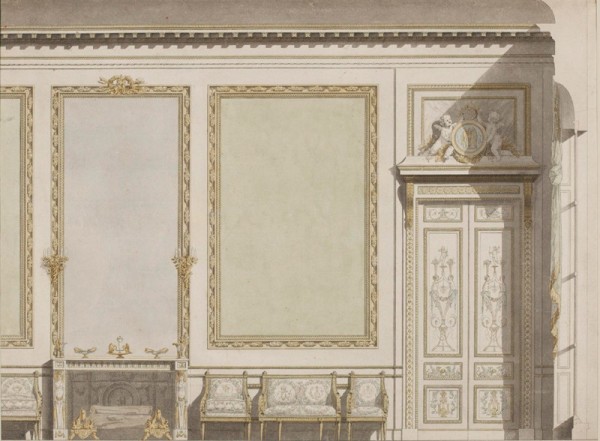
François-Joseph Bélanger, elevation of a wall in the salon of the duchesse de Mazarin, Paris, ca. 1780. Pen, ink, and watercolor on paper. 16 5/16" x 10 7/8". (Copyright, Victoria and Albert Museum, London.)
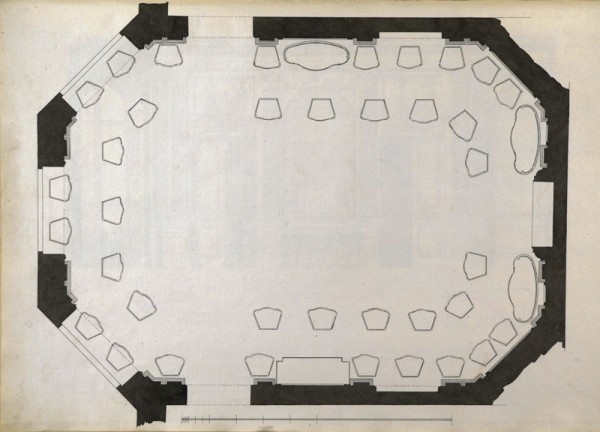
Erik Palmstedt, floor plan of the Hôtel du Châtelet, Paris, 1778–1780. Pen and ink on paper, 20 1/4" x 13 3/4". (Courtesy, Kungliga Akademien för de fria konsterna/Royal Academy of Fine Arts, Stockholm.) This plan shows the two-row circular configuration of seating with sieges meublants on the outside and sieges courants on the inside.
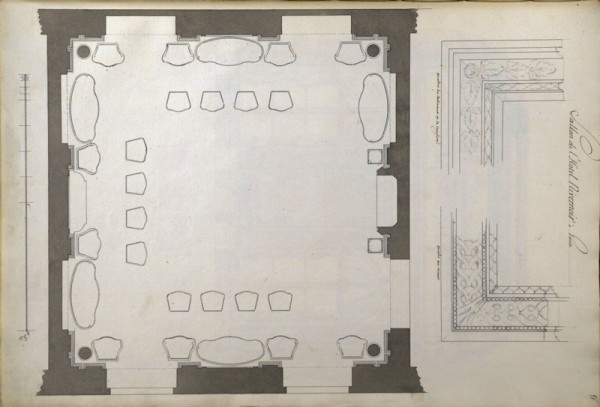
Erik Palmstedt, floor plan of the Hôtel du Nivernai, Paris, 1778–1780. Pen and ink on paper, 10 1/16" x 14 3/16". (Courtesy, Kungliga Akademien för de fria konsterna/Royal Academy of Fine Arts, Stockholm.) This plan shows the U-shaped grouping of side chairs in the center and the larger armchairs and sofas along the perimeter.
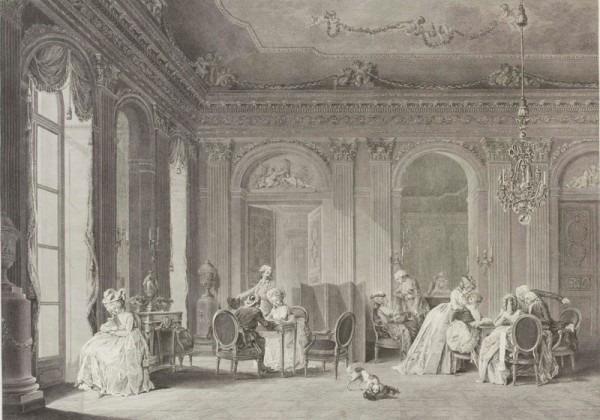
François Dequevauviller, after Niklas Lafrensen II, L’assemblé au salon (Gathering in a Salon), Paris, 1783–1784. Engraving and etching. 15 7/8" x 19 3/4". (Copyright, Victoria and Albert Museum.) The chairs have been arranged in small, informal groups for a variety of activities.
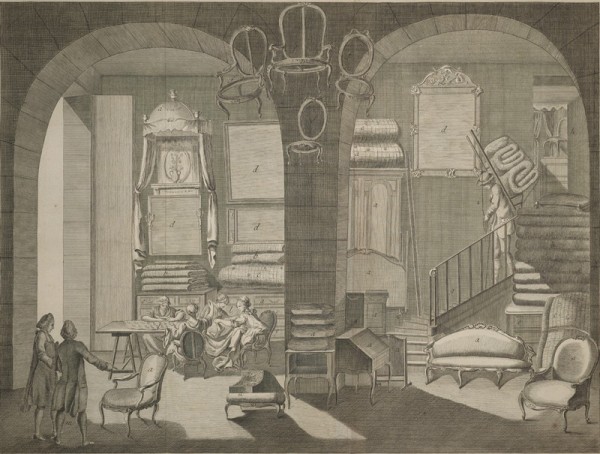
Robert Bénard, after Radel, Tapissier. Intérieur d’une boutique et differens ouvrages, plate 1, Encyclopédie, planches, sur les sciences, les arts libéraux, et les arts méchaniques, avec leur explication, vol. 9, edited by Denis Diderot et al. (Paris: Chez Briasson, 1762-1772). Engraving. 18 45/64" x 13 31/32". (Courtesy, Kislak Center for Special Collections, Rare Books and Manuscripts, University of Pennsylvania.)
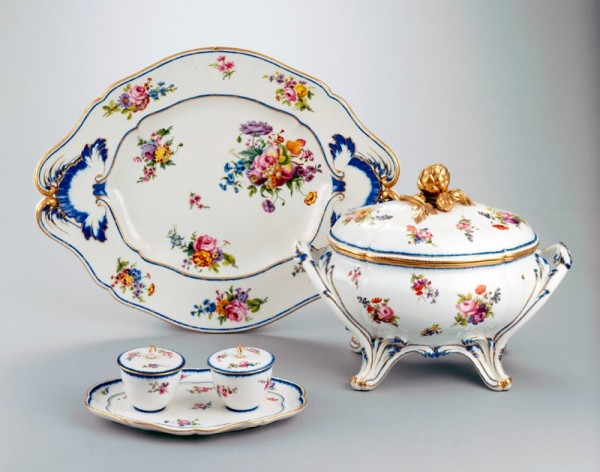
Soup tureen and stand and preserves stand, Royal Porcelain Manufactory of Sèvres, France, 1782. Porcelain. Tureen, H. 13"; Stand, H. 17 3/4"; Preserves stand, H. 3 3/16". (Courtesy, White House Historical Association © 2000.) John and Abigail Adams probably acquired this china service during their time in France while John Adams served as the minister to France between 1784 and 1785.
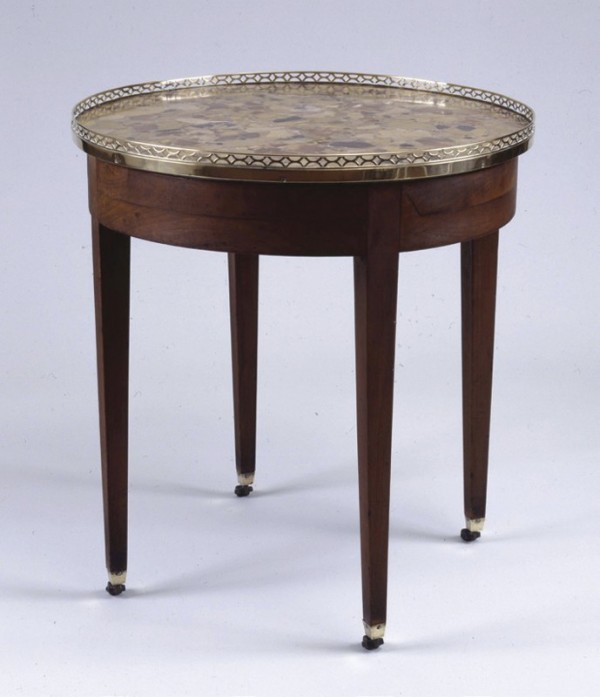
Table, France, ca. 1785. Cherry; Brescia marble, brass. H. 28 1/16", W. 25 5/8". (Copyright, Thomas Jefferson Foundation, Monticello.) While residing in Paris, Thomas Jefferson commissioned several pieces of furniture, including this table a trois fin. Jefferson likely appreciated the table’s versatility. It has a removable circular tabletop, finished in leather and wool on opposite sides, that can be placed on top of the marble to expand the table’s functions: the marble surface might thus be used to serve drinks, the leather for writing, and the wool for playing games.
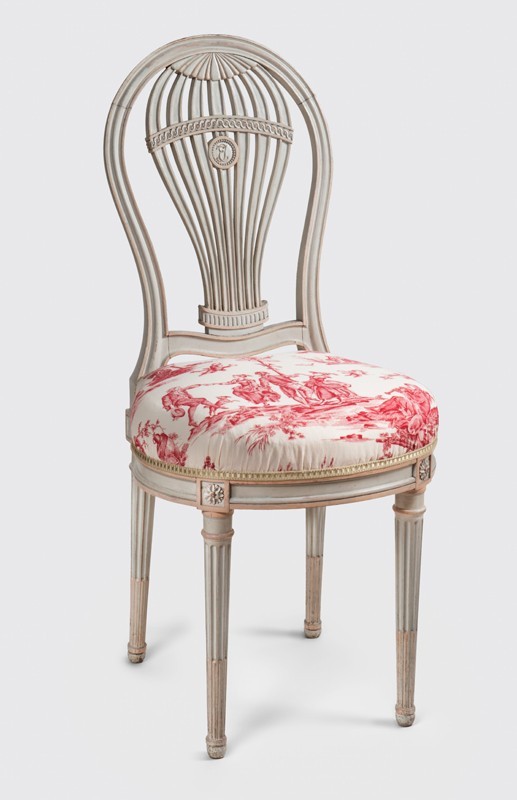
Side chair, France, ca. 1780–1790. Beech. H. 37 1/2", W. 17", D. 16". (Courtesy, John Jay Homestead State Historic Site, Katonah, New York, New York State Office of Parks, Recreation and Historic Preservation; photo, Gavin Ashworth.) In the fall of 1783, Parisians were captivated by the recent invention of the hot-air balloon. Sarah Livingston Jay witnessed several ascents, including the first hydrogen-powered balloon flight by Jacques Charles and Nicolas Robert. Many French craftsmen translated the popular balloon shape into furniture, jewels, and clocks. The Jays brought two such souvenir chairs back to the United States upon their return in 1784.
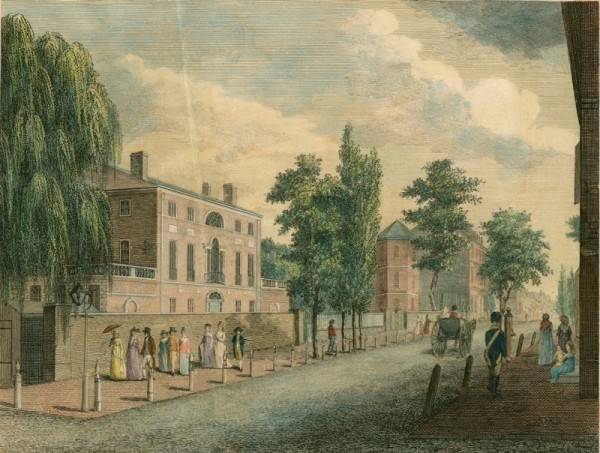
William Birch and Son, “View in Third Street, from Spruce Street, Philadelphia,” Philadelphia, 1800. Hand colored engraving on paper, 13" x 16". (Courtesy, Library Company of Philadelphia.) This view shows the William Bingham Mansion.
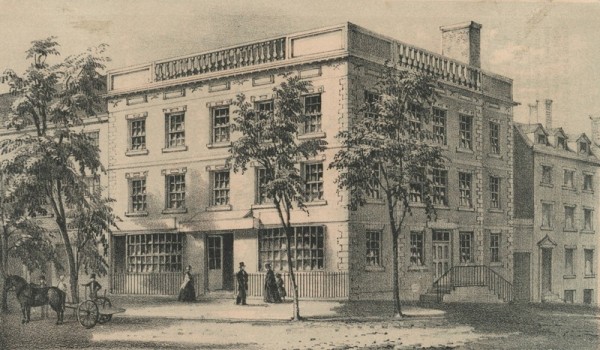
G. Hayward, “No. 3 Cherry Street, First Presidential Residence,” New York, 1853. Lithograph published in Valentine’s Manual [Manual of the Corporation of the City of New York, edited by D. T. Valentine]. (Courtesy, New-York Historical Society.)
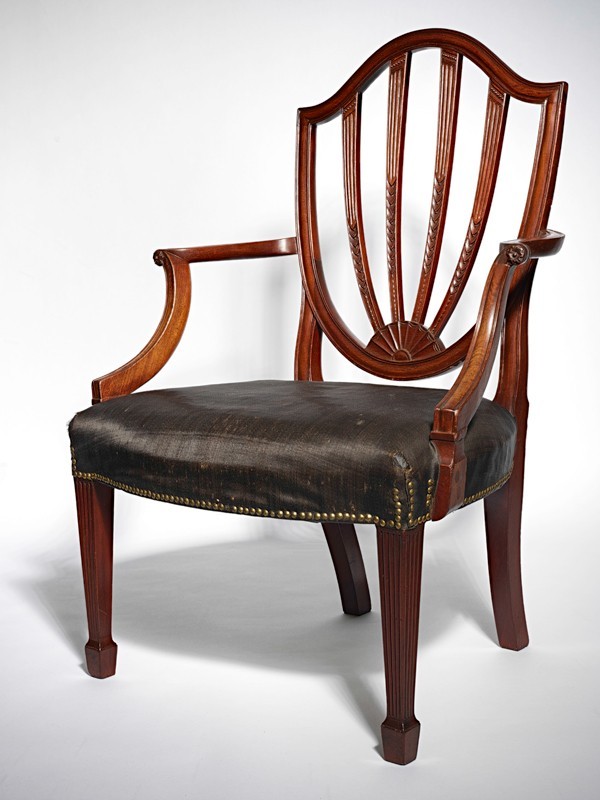
Armchair (one of a pair), attributed to Thomas Burling, New York City, ca. 1790. Mahogany with oak; haircloth. H. 40", W. 28", D. 17". (Courtesy, Division of Cultural and Community Life, National Museum of American History, Smithsonian Institution.)
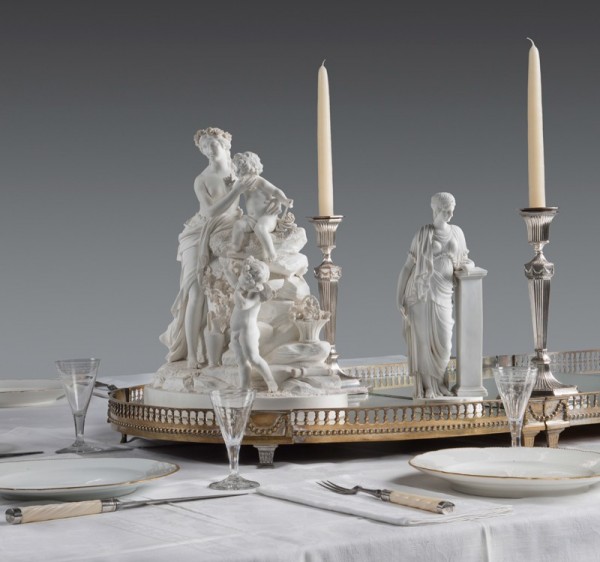
Presidential table wares, including the plateau, figural group of Venus and cupids and La Peinture, and Sèvres dinner service. (Courtesy, Mount Vernon Ladies’ Association; photo, Gavin Ashworth.)
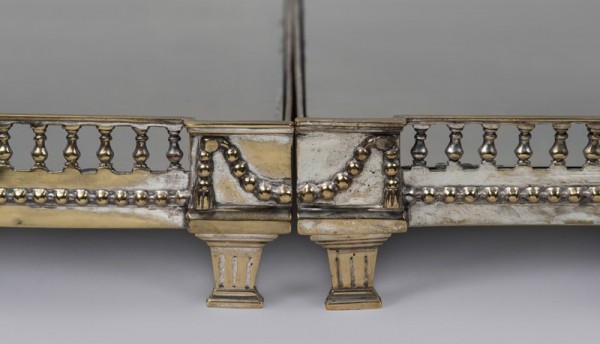
Plateau, France, ca. 1789. Silvered brass, mirrored glass, unidentified wood. H. 2 7/8", W. 17 3/8", L. 24". (Courtesy, Mount Vernon Ladies’ Association; photo, Gavin Ashworth.)
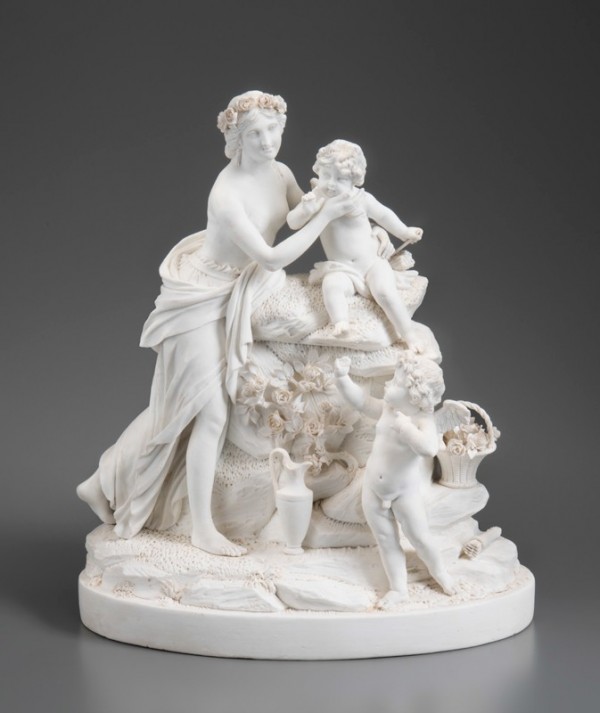
Figural group of Venus and cupids, Duc d’Angoulême’s porcelain factory, France, ca. 1790. Biscuit porcelain (hard-paste). H. 15 1/4", W. 12 7/8". (Courtesy, Mount Vernon Ladies’ Association; photo, Gavin Ashworth.)
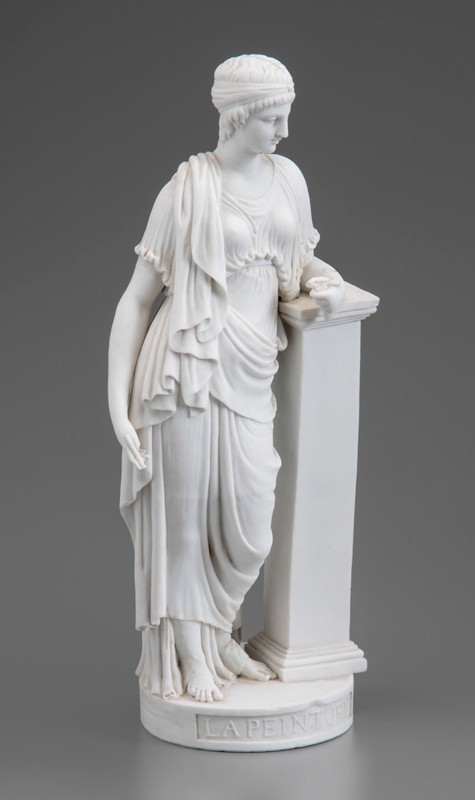
La Peinture, Duc d’Angoulême’s porcelain factory, France, ca. 1790. Biscuit porcelain (hard-paste). H. 11 1/4", W. 5", D. 3 1/2". (Courtesy, Stephen L. Zabriskie; photo, Gavin Ashworth.
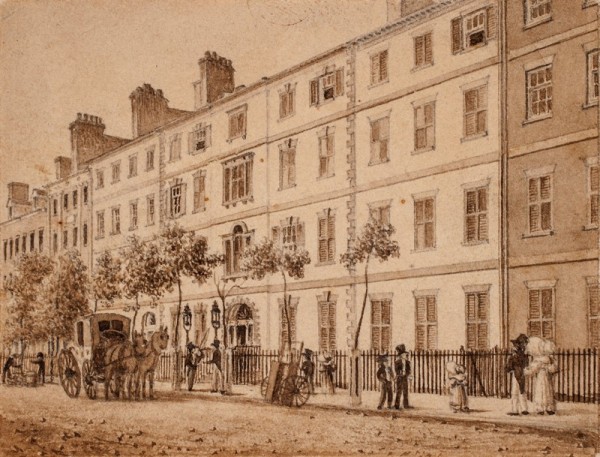
Charles Burton, “Bunker’s Mansion House, Broadway, New York City: Study for Plate 5A of ‘Bourne’s Views of New York,’” (39–41 Broadway), New York, ca. 1831. Brown ink and wash, gray wash, and graphite on paper. H. 2 5/8", W. 3 1/2". (Courtesy, New-York Historical Society, bequest of Stephen Whitney Phoenix, 1881.10.)
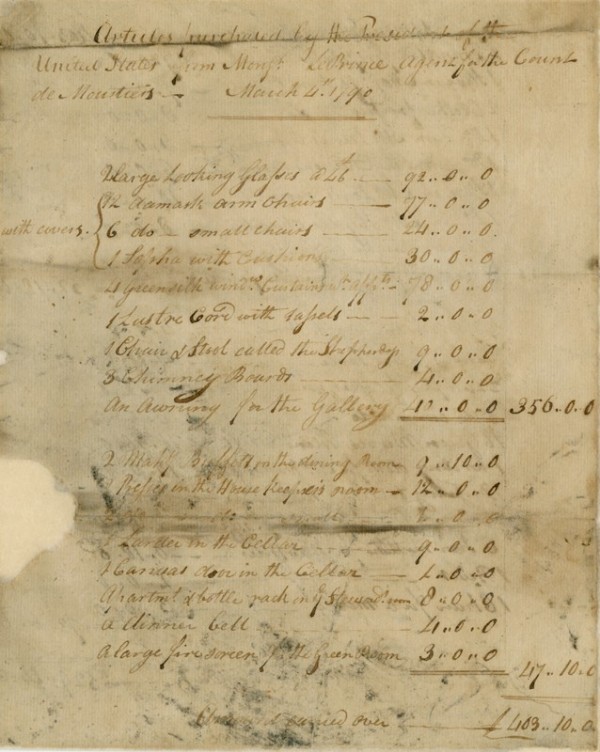
“Articles purchased by the President of the United States from Mons. Le Prince agent for the Count de Moustiers, March 4, 1790.” (Courtesy, Mount Vernon Ladies’ Association.)
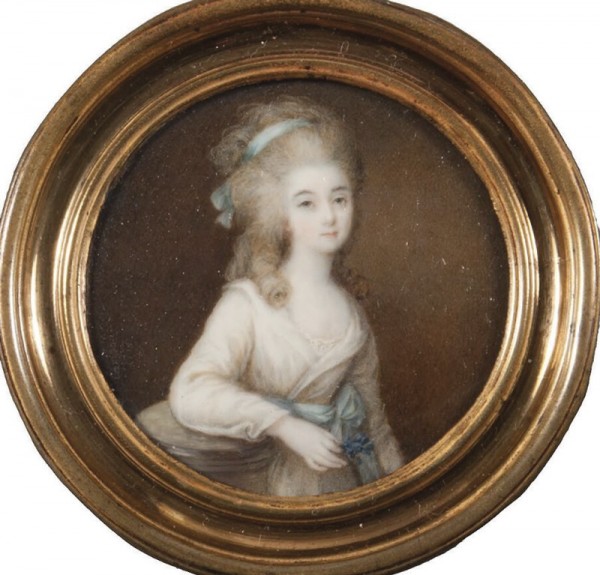
Ignazio Pio Vittoriano Campana, Marquise Jean-François-René-Almaire de Bréhan (Anne-Flore Millet), 1777. Watercolor on ivory. H. 2 11/16". (Courtesy, Nationalmuseum, Stockholm, Sweden; photo, Nationalmuseum, CC BY-SA.)
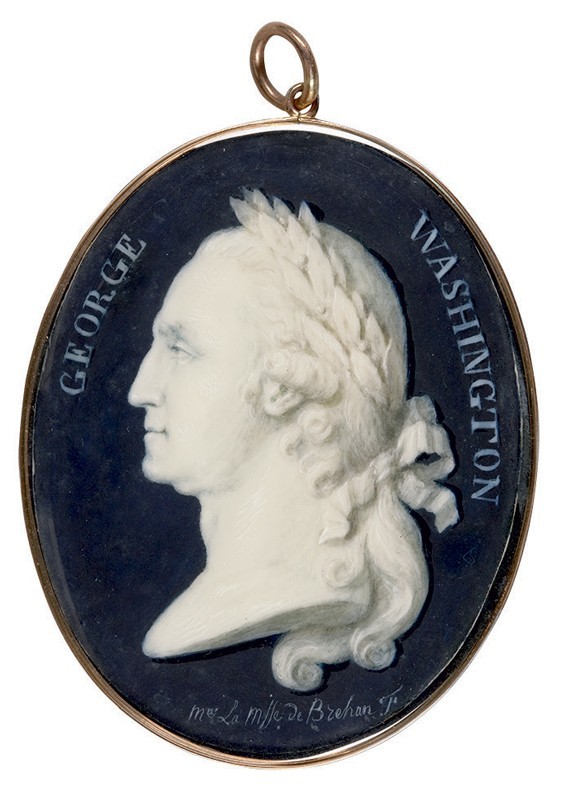
Marquise Jean-Françoise-René-Almaire de Bréhan (Anne-Flore Millet), George Washington, France, 1789. Watercolor on ivory. H. 2 3/4". (Courtesy, Yale University Art Gallery.) Madame de Bréhan was an accomplished pastelist and noted for the artistic decorations she created and displayed during lavish events at the minister’s residence. She made two miniatures of George Washington: the first shortly after her visit to Mount Vernon in the spring of 1788; and this one after her return to Paris in 1789.
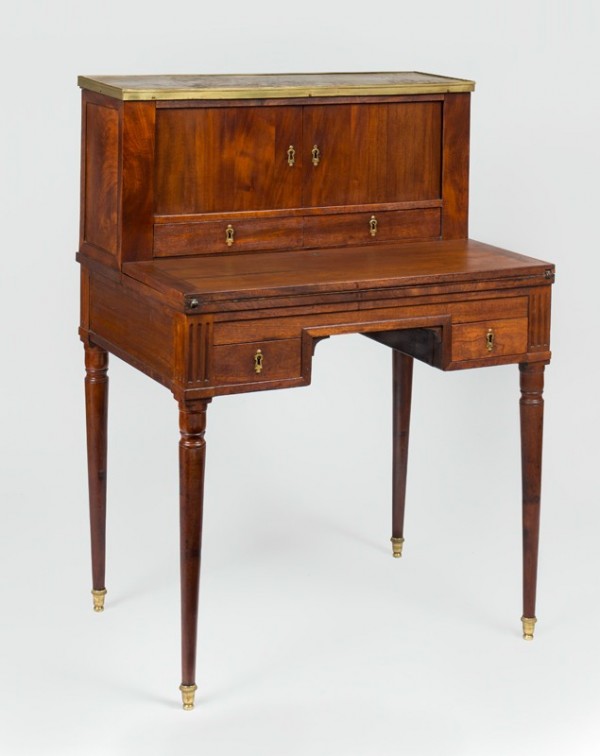
Victor-Jean-Gabriel Chavigneau, lady’s writing table, France, ca. 1787–1789. Mahogany and mahogany veneer with white oak; marble, brass, silvered brass, leather, gold leaf. H. 41 1/2", W. 28 1/4", D. 19". (Courtesy, Mount Vernon Ladies’ Association; photo, Gavin Ashworth.)
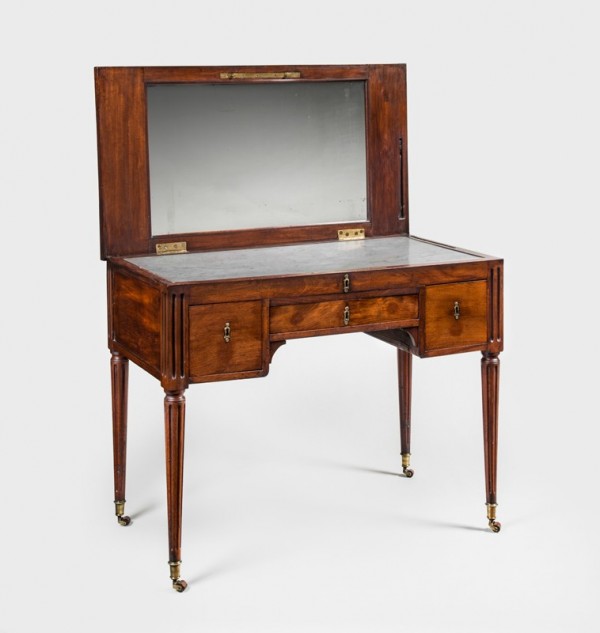
Dressing table, France, ca. 1760–1780. Mahogany with fir; marble, glass. H. 29", W. 37 5/8", D. 21". (Courtesy, Mount Vernon Ladies’ Association; photo, Gavin Ashworth.)
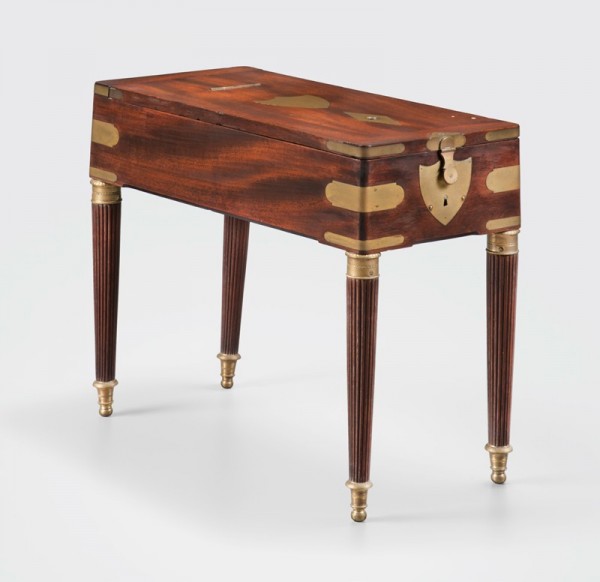
Bidet, France, ca. 1790. Mahogany; leather, brass. H. 15 1/2", W. 18 1/4", D. 8 7/8". (Courtesy, Joseph James Ryan; photo, Gavin Ashworth.)
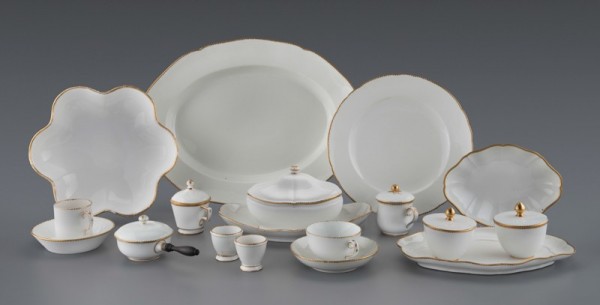
Dinner service, Sèvres factory, France, ca. 1780. Porcelain (hard-paste). (Courtesy, Mount Vernon Ladies’ Association; photo, Gavin Ashworth.)
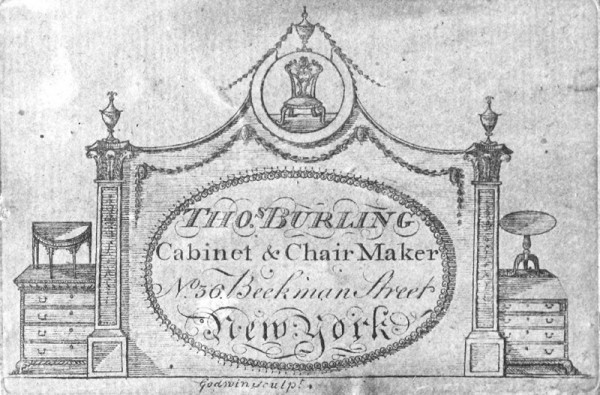
Abraham Godwin, label of Thomas Burling, New York, ca. 1786–1793. Engraving on paper. Dimensions not recorded. (Courtesy, Collection of the Museum of Early Southern Decorative Arts, Old Salem Museum and Gardens, Winston-Salem, North Carolina.)
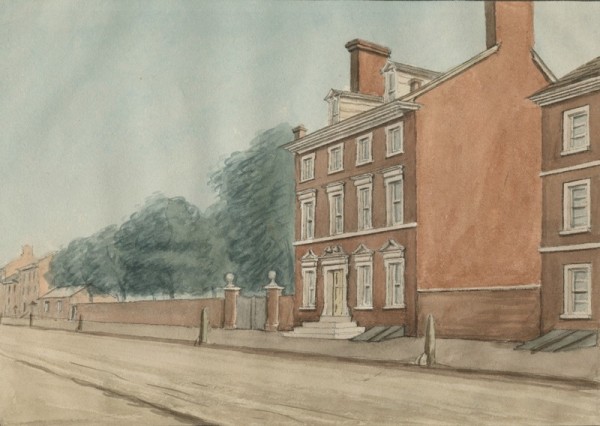
W. L. Breton, “Residence of Washington in High Street, Philadelphia,” Philadelphia, ca. 1828-1830. Watercolor on paper. 9 13/16" x 7 1/2". (Courtesy, Historical Society of Pennsylvania.)
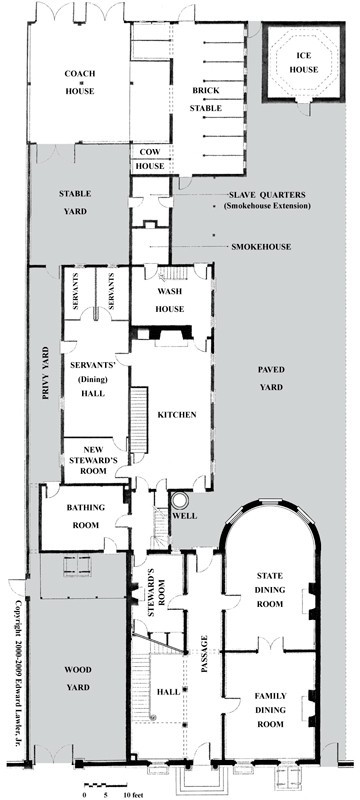
Conjectural floor plan (ground floor) of the President’s House in Philadelphia. (Courtesy, Edward Lawler Jr. © 2001-2019. All rights reserved.) The bottom is north.
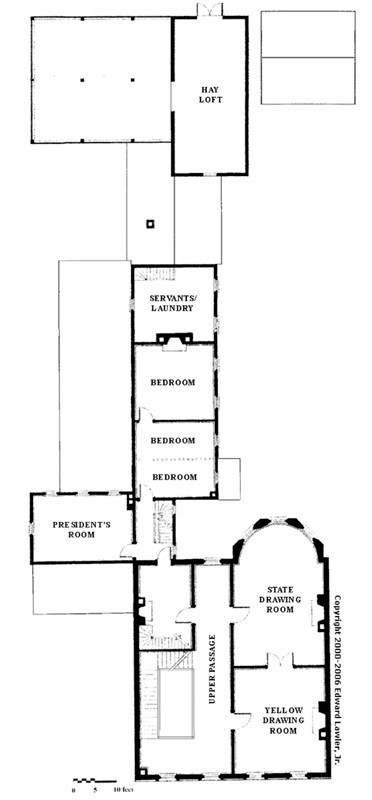
Conjectural floor plan (second floor) of the President’s House in Philadelphia. (Courtesy, Edward Lawler Jr. © 2001-2019. All rights reserved.) The bottom is north.
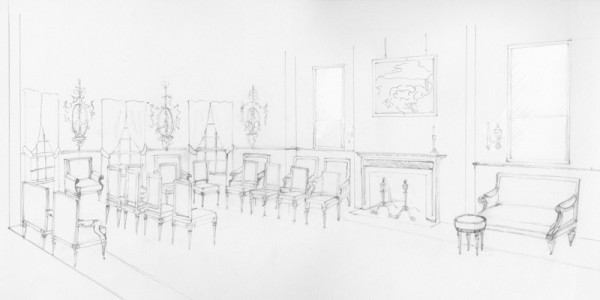
Conceptual sketch of the Green Drawing Room, President’s House, 190 High Street, Philadelphia. (Artwork by Wynne Patterson.) This is a visual interpretation that relies on such evidence as a fire insurance survey from 1773, Edward Lawler Jr.’s conjectural reconstruction of the floor plans, Washington’s inventory of the drawing room in 1797, personal correspondence of the president and his aides, as well as extant furnishings and architectural trimmings.
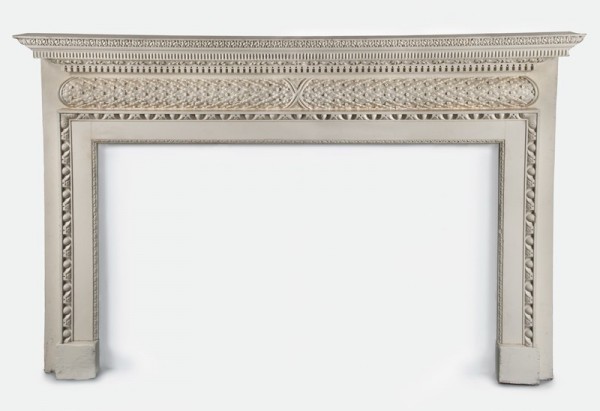
Mantelpiece, Philadelphia, ca. 1781. Wood; paint. H. 56 1/2", W. 79 1/2", D. 8 1/2". (Courtesy, Philadelphia History Museum at the Atwater Kent, Historical Society of Pennsylvania Collection; photo, Gavin Ashworth.) This mantelpiece was salvaged from the yellow drawing room in the President’s House prior to the building’s demolition in 1832, and the pulvinated frieze of banded foliage may represent the style of the woodwork on the mantel wall and above the doors in the green drawing room.
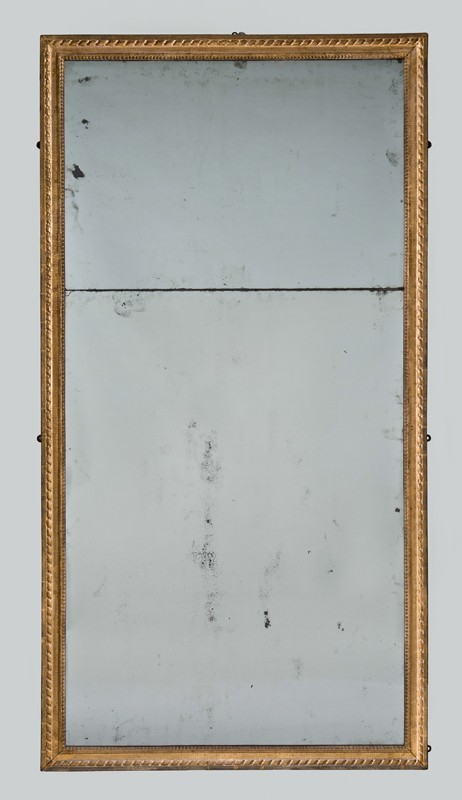
Looking glass, probably France, ca. 1788. Basswood; gesso, gold leaf, glass. H. 81 1/4", W. 43". (Courtesy, Mount Vernon Ladies’ Association; photo, Gavin Ashworth.)
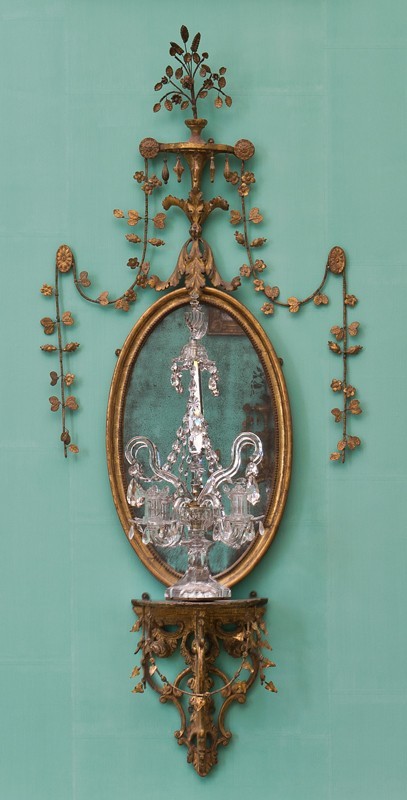
Looking glass, attributed to James Reynolds, Philadelphia, 1791–1797. Yellow poplar with Atlantic white cedar; gesso, gold leaf, glass. H. 50", W. 16 1/2". (Courtesy, Mount Vernon Ladies’ Association; photo, Gavin Ashworth.)
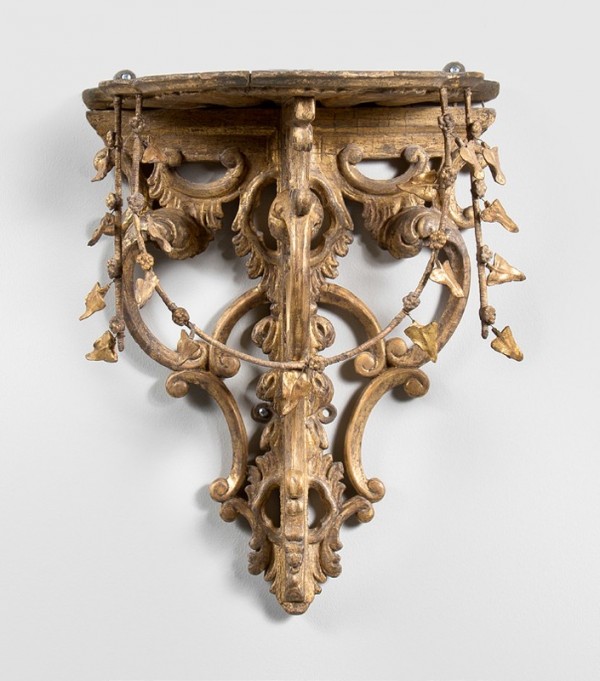
Wall bracket, attributed to James Reynolds, Philadelphia, ca. 1791. White pine; gesso, gold leaf, wire, iron. H. 15 3/4", W. 12 1/4", D. 9". (Courtesy, Mount Vernon Ladies’ Association; photo, Gavin Ashworth.)
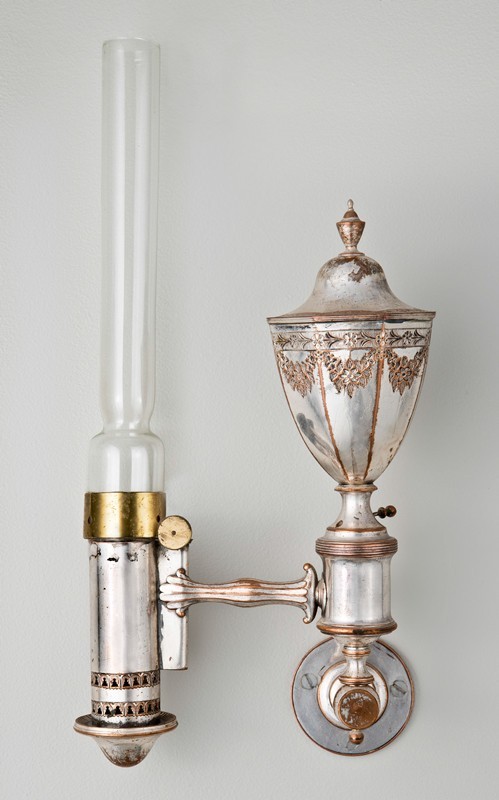
Argand wall lamp, probably England, ca. 1790–1797. Silver-plated copper, brass, tin, glass. H. 16 1/8", W. 7 3/4", D. 4". (Courtesy, Mount Vernon Ladies’ Association; photo, Gavin Ashworth.) This lamp was retailed by Joseph Anthony.
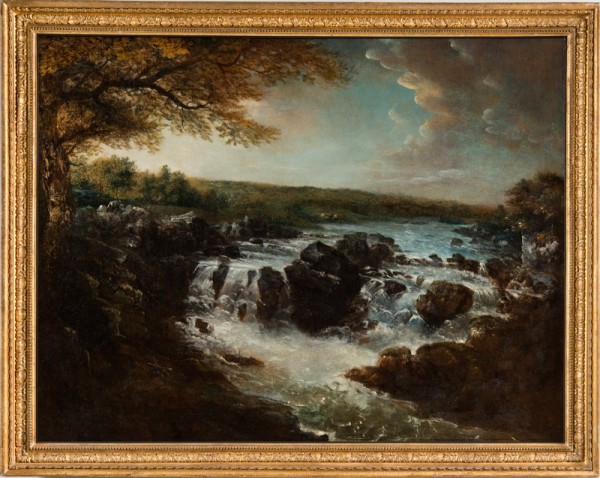
George Beck, The Great Falls of the Potomac, United States, 1797. Oil on canvas. 44" x 55 1/4". (Courtesy, Mount Vernon Ladies’ Association; photo, Gavin Ashworth.)
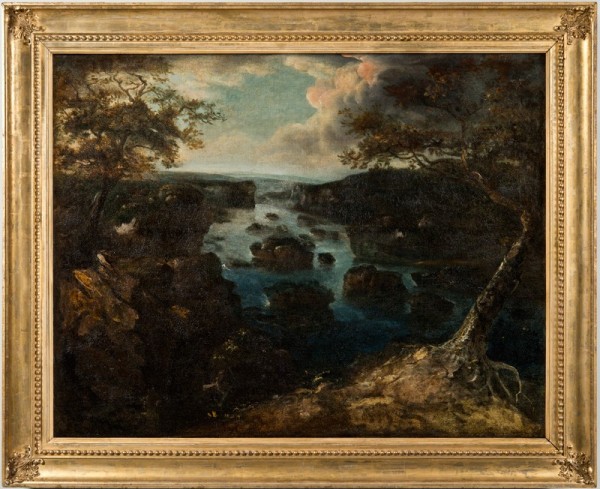
George Beck, The Passage of the Pato’k thro’ the blew mountain, at the confluence of that River with the Shan’h, United States, 1797. Oil on canvas. 39" x 49 5/8". (Courtesy, Mount Vernon Ladies’ Association; photo, Gavin Ashworth.)
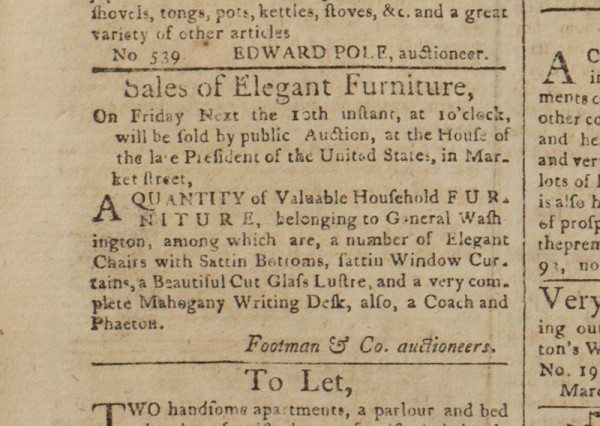
“Sales of Elegant Furniture,” advertisement in Claypoole’s American Daily Advertiser, Philadelphia, March 8, 1797. (Courtesy, Historical Society of Pennsylvania.)
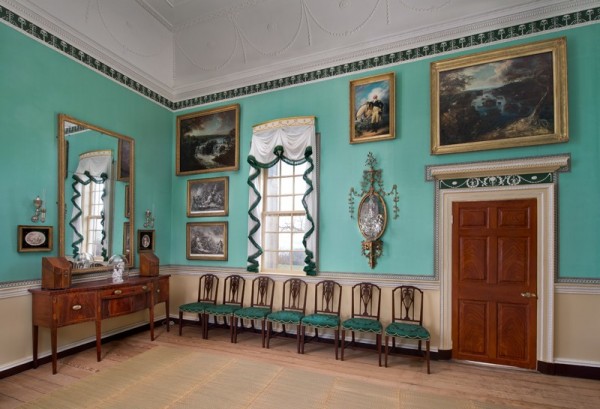
New Room, Mount Vernon, Mount Vernon, Virginia. (Courtesy, Mount Vernon Ladies’ Association; photo, Gavin Ashworth.)
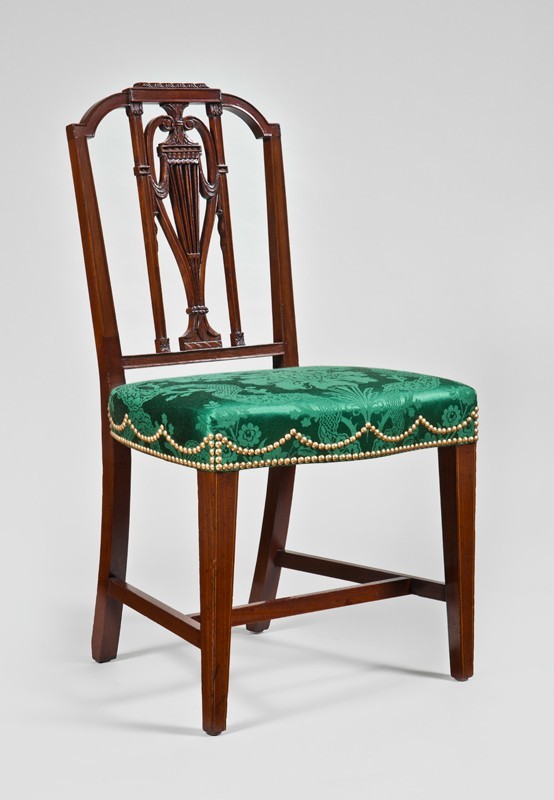
Side chair, attributed to John Aitken, Philadelphia, ca. 1797. Mahogany and light wood inlay with unidentified secondary wood. H. 37 7/16", W. 20 5/8", D. 18 3/4". (Courtesy, Mount Vernon Ladies’ Association; photo, Gavin Ashworth.)
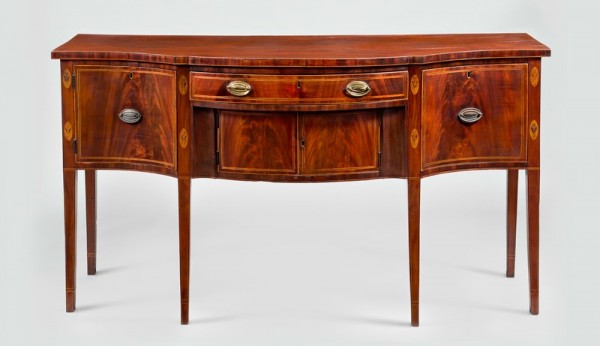
Sideboard, attributed to John Aitken, Philadelphia, ca. 1797. Mahogany, mahogany veneer, and light and dark wood inlays with white pine, tulip poplar, and unidentified softwood. H. 37 5/8", W. 71 7/8", D. 26 11/16". (Courtesy, Mount Vernon Ladies’ Association; photo, Gavin Ashworth.)
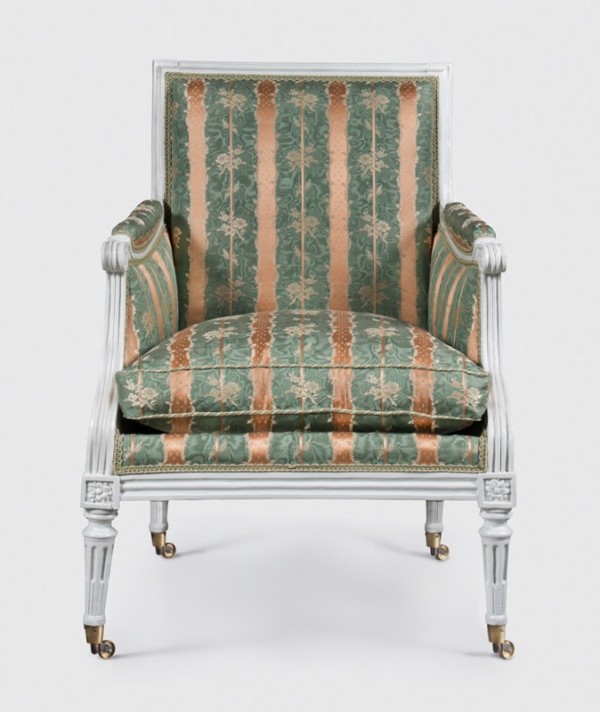
Bergère, attributed to Jean-Baptiste Lelarge, Paris, ca. 1780. Beech; paint, brass. H. 35 1/8", W. 25 1/2", D. 22 3/8". (Courtesy, Mount Vernon Ladies’ Association; photo, Gavin Ashworth.)
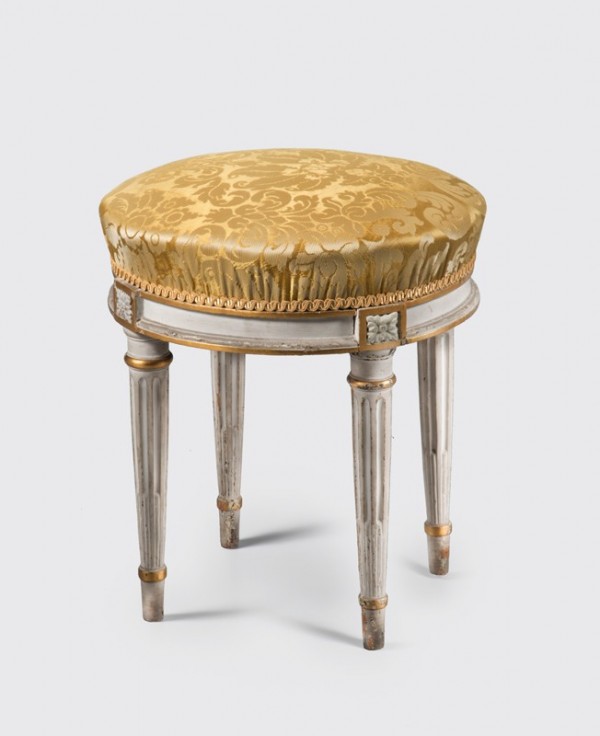
Footstool, attributed to Georges Bertault, Philadelphia, ca. 1793. Ash with sweet gum and beech; silk, flannel, haircloth. H. 18", D. 16 3/4". (Courtesy, Tudor Place Historic House and Garden; photo, Gavin Ashworth.)
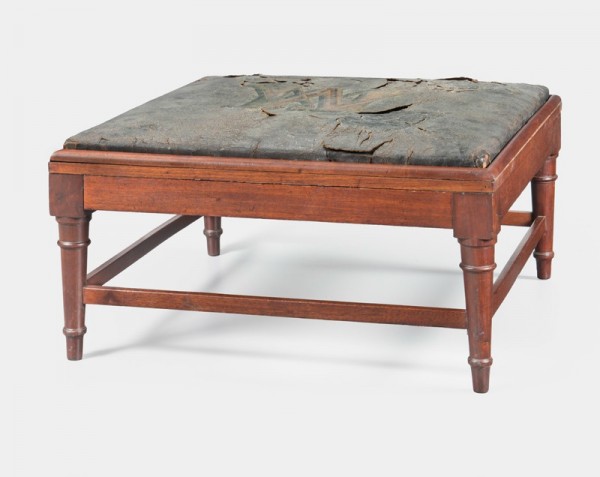
Footstool, attributed to Georges Bertault, United States, ca. 1788–1790. Mahogany, walnut, and pine; leather. H. 12", W. 23", D. 23". (Courtesy, Mount Vernon Ladies’ Association; photo, Gavin Ashworth.)
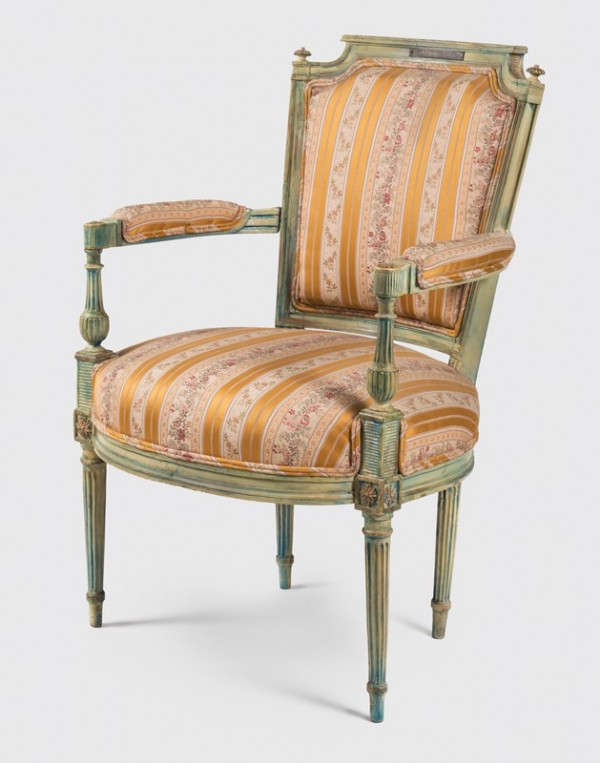
Armchair, France or United States, ca. 1790–1795. Unidentified woods; paint, silk. H. 34 1/2", W. 24", D. 21 1/2". (Courtesy, Museum of the American Revolution; photo, Gavin Ashworth.)

Detail showing the plaque on the armchair illustrated in fig. 50. (Photo, Gavin Ashworth.) The inscription reads: “Presented after Washington’s death, by the members of his Family to Gen. Sam Smith, after Gen. Smith’s death, purchased by Jno. B. Cannon, Baltimore, Md.”
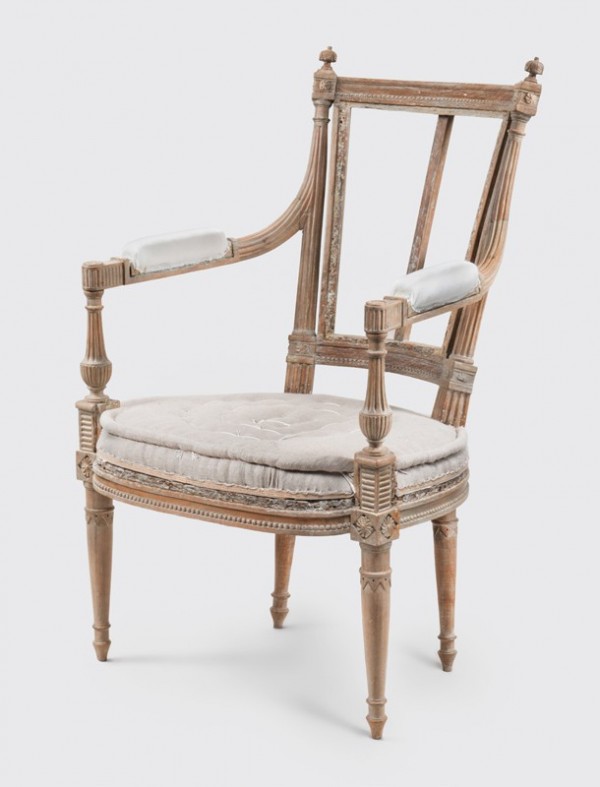
Armchair, possibly France, 1790–1800. Walnut. H. 38 1/2", W. 24", D. 18 3/4". (White House Collection, Courtesy, White House Historical Association © 2019; photo, Gavin Ashworth.)
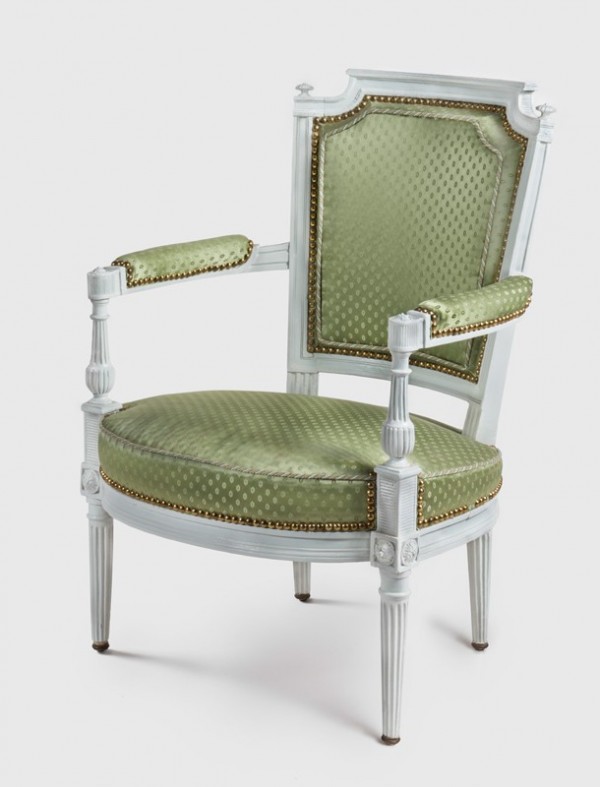
Armchair, France or United States, 1790–1795. Beech; paint. H. 31 3/4", W. 23 3/8", D. 20 1/4". (Courtesy, Mount Vernon Ladies’ Association; photo, Gavin Ashworth.)
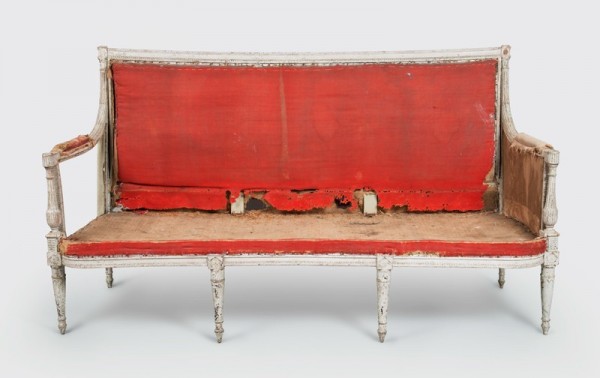
Sofa, probably France, ca. 1795–1800. European walnut; paint, silk. H. 39 7/8", W. 70", D. 23 1/2". (Private collection; photo, Gavin Ashworth.)
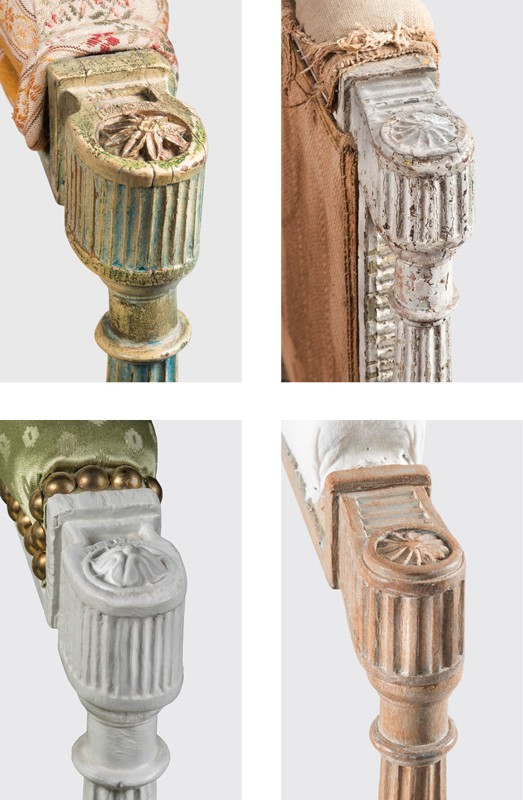
Details of the arm terminals of the chairs and sofa illustrated in (from left to right) figs. 50, 54, 53, 52. (Photos, Gavin Ashworth.)
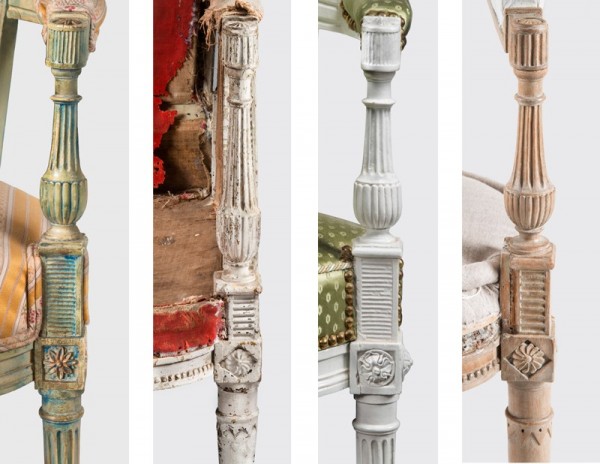
Details of the arm supports of the chairs and sofa illustrated in (from left to right) figs. 50, 54, 53, 52. (Photos, Gavin Ashworth.)
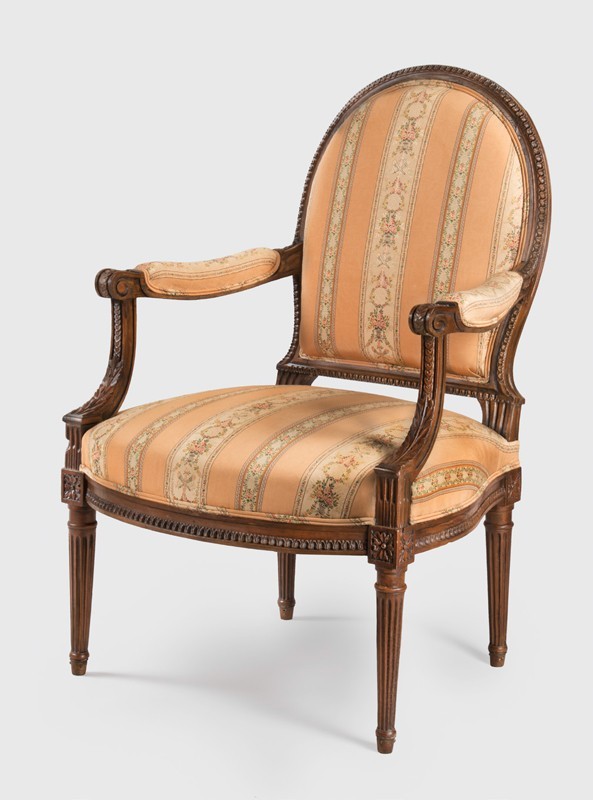
Armchair, probably France, 1785–1790. Beech; silk. H. 38 1/2", W. 24", D. 18 3/4". (Courtesy, Mount Vernon Ladies’ Association; photo, Gavin Ashworth.)
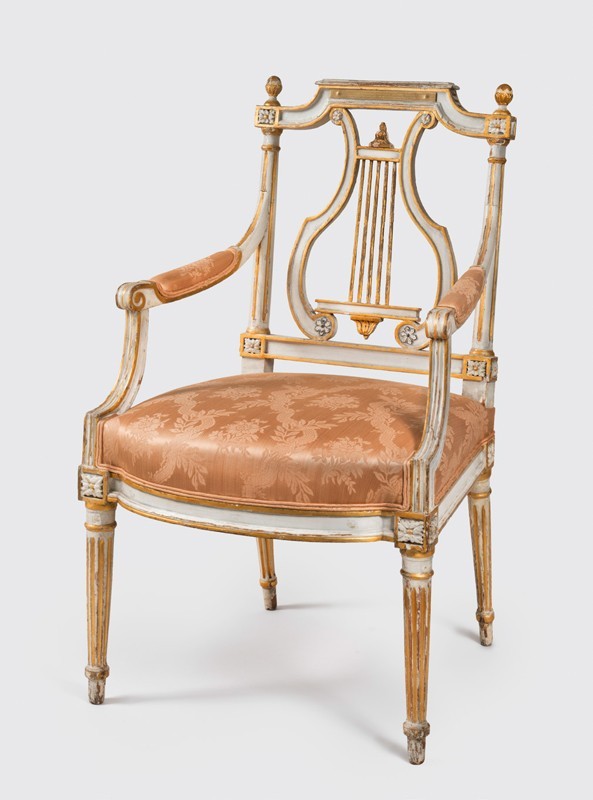
Armchair, possibly United States, ca. 1790–1810. Ash; paint, gold leaf, silk. H. 35 1/2", W. 21", D. 20". (Courtesy, Delaware Historical Society; photo, Gavin Ashworth.)
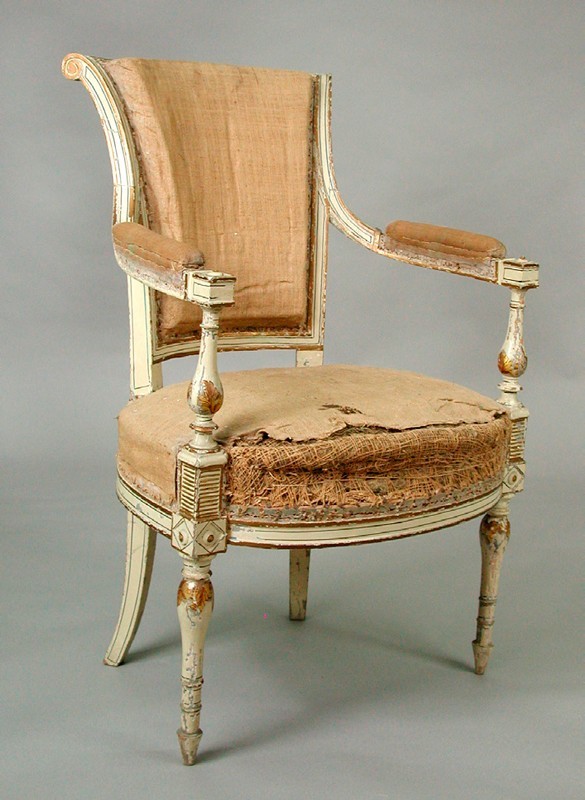
Armchair, France or United States, ca. 1785–1797. Beech; silk, linen, haircloth, paint, gold leaf. H. 34 1/4", W. 22 3/16", D. 22". (Courtesy, Connecticut Historical Society, lent by Mrs. Arnold G. Dana, 1983.57.0.)
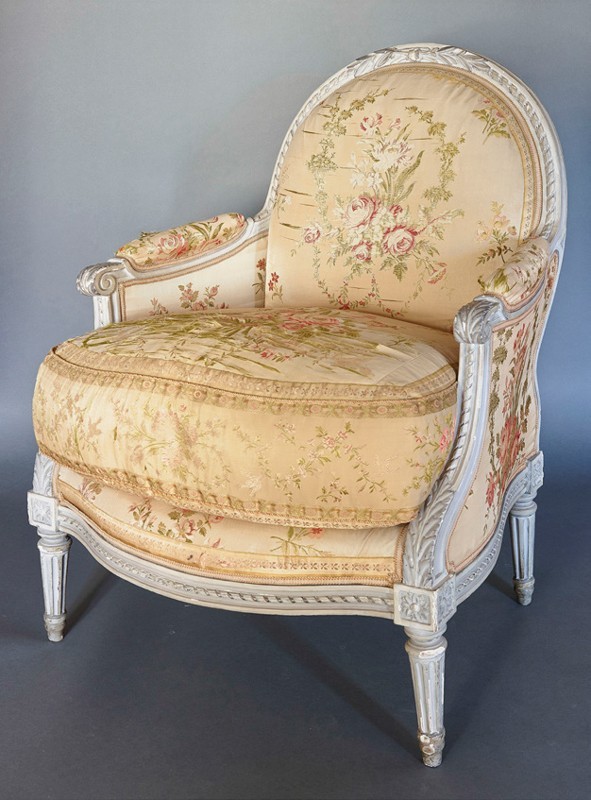
Jean-Baptiste Lelarge III, bergère, Paris, ca. 1780. Beech; paint, silk. H. 39 3/8", W. 28 1/2", D. 26 1/2". (Courtesy, Chateaux de Versailles et de Trianon, Versailles, France. Copyright, RMN-Grand-Palais/Art Resource, NY ; photo, Christophe Fouin.)
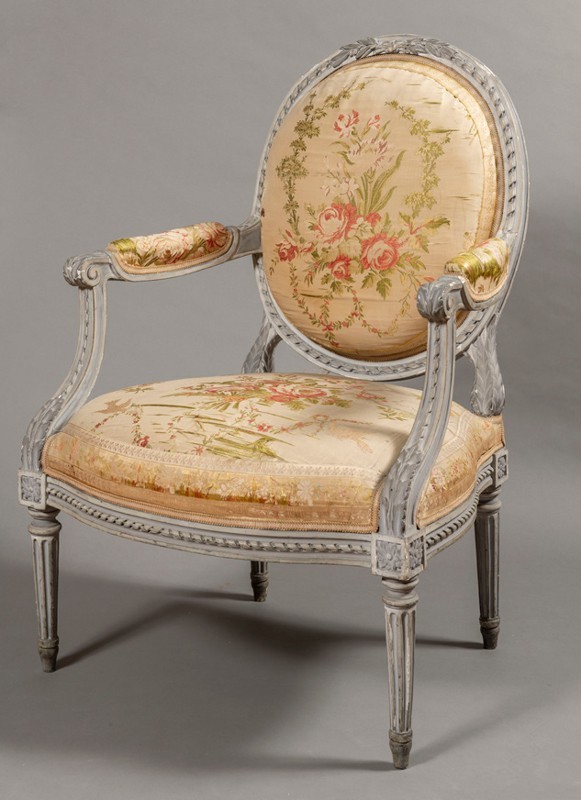
Jean-Baptiste Lelarge III, fauteuil, Paris, ca. 1780. Beech; paint, silk. H. 38 3/16", W. 26 7/32", D. 23 15/64". (Courtesy, Chateaux de Versailles et de Trianon, Versailles, France. Copyright, RMN-Grand-Palais/Art Resource, NY; photo, Christophe Fouin.)
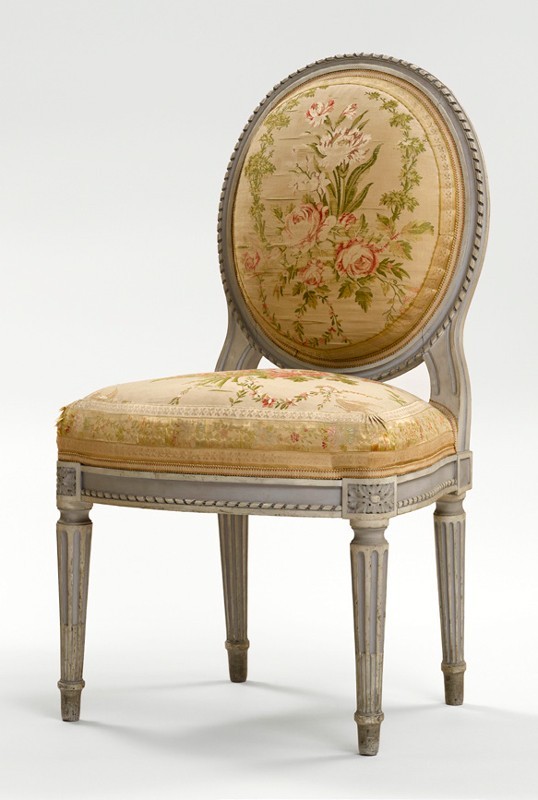
Chaise, Paris, ca. 1809. Beech ; paint, silk. H. 36 29/64", W. 19 11/16", D. 18 45/64". (Courtesy, Chateaux de Versailles et de Trianon, Versailles, France. Copyright, RMN-Grand-Palais/Art Resource, NY; photo, Franck Raux.)
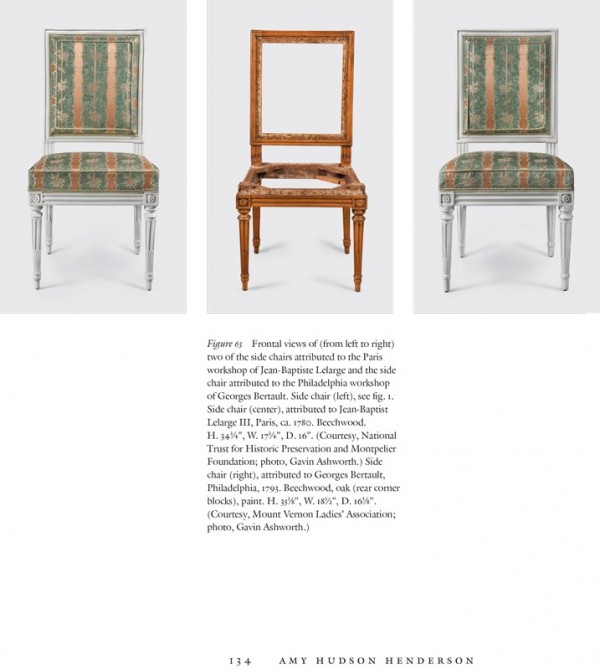
Frontal views of (from left to right) two of the side chairs attributed to the Paris workshop of Jean-Baptiste Lelarge and the side chair attributed to the Philadelphia workshop of Georges Bertault. Side chair (left), see fig. 1. Side chair (center), attributed to Jean‑Baptist Lelarge III, Paris, ca. 1780. Beechwood. H. 34 3/4", W. 17 3/4", D. 16". (Courtesy, National Trust for Historic Preservation and Montpelier Foundation; photo, Gavin Ashworth.) Side chair (right), attributed to Georges Bertault, Philadelphia, 1793. Beechwood, oak (rear corner blocks), paint. H. 35 1/8", W. 18 1/2", D. 16 5/8". (Courtesy, Mount Vernon Ladies’ Association; photo, Gavin Ashworth.)
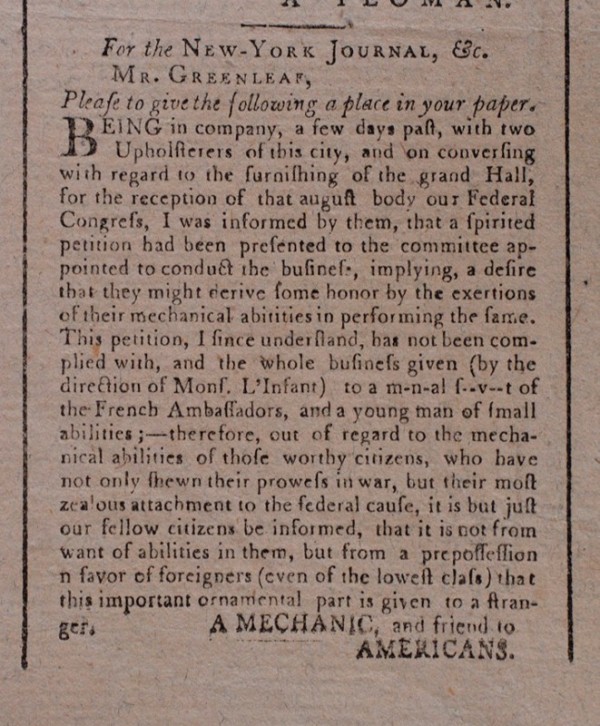
Editorial, New York Journal, March 28, 1788. (Courtesy, Library of Congress; photo, author.)
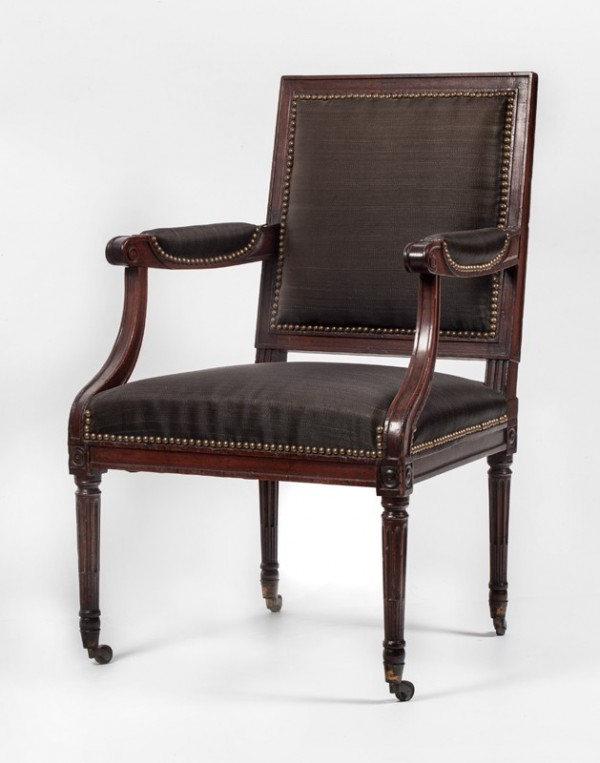
Armchair, New York, ca. 1788. Mahogany. H. 36", W. 23 1/2", D. 20". (Courtesy, New-York Historical Society.)
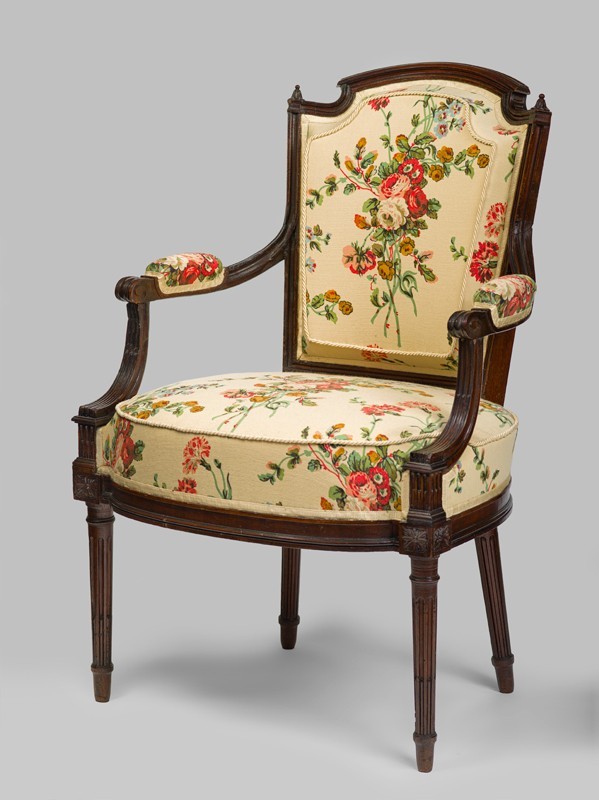
Armchair, attributed to Georges Bertault and Adam Hains, Philadelphia, 1793. Mahogany, ash. H. 35", W. 23", D. 19 3/4". (Courtesy, Longfellow House-Washington’s Headquarters, National Park Service; photo, Andrew Davis.)
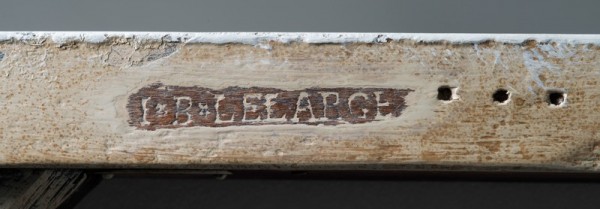
Detail showing the stamp on the side illustrated on the far left in fig. 63.
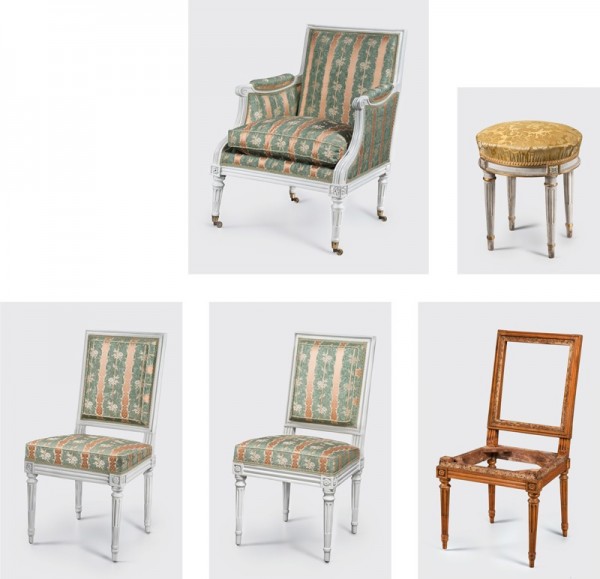
Five of the six surviving pieces from George and Martha Washington’s Green Drawing Room suite.
